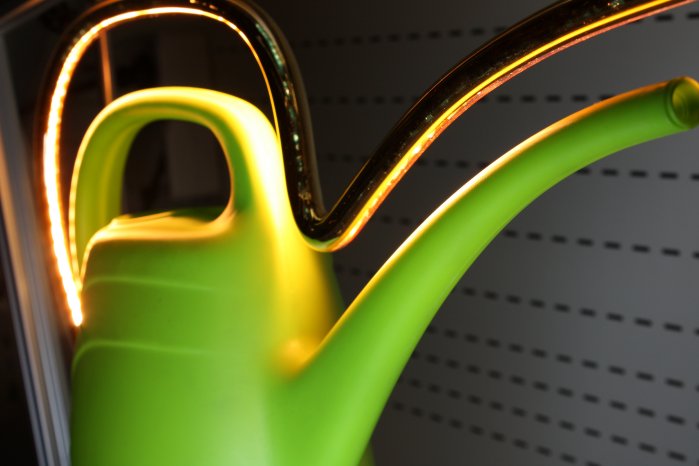Infrared radiation heats plastic parts in a contact-free manner in a matter of seconds and is targeted at the surface to be heated. Shaped emitters direct infrared radiation precisely where it is needed. This is reinforced by reflectors, which are coated directly on the emitters so that the energy is focused precisely on a burr or a joint. As a result, the reject rate in the production of formed components can be significantly reduced.
Contoured Infrared Emitters Are Used to Join and Deburr
By using contact-free infrared, plastic components can be joined without the need for additional adhesives or other additional materials. The infrared radiation melts a thin surface layer of two plastic components very quickly and these can then be pressed together to form, say, a reservoir for windscreen wash or brake fluid. In contrast to contact welding with hot plates, there is no residual material on the heat source and heating takes place, repeatably, in seconds.
Handles, housing parts, lids, intake pipes and covers are often injection molded in plastics. Unfortunately it is not always possible to prevent the occurrence of sharp-edged burrs, for example at the tool separation plane. With components of complex shape, the removal of burrs before subsequent processing or coating can be a very real requirement. Quartz glass infrared emitters can be shaped to follow edges or burrs, to precisely melt away the excess material without causing any damage to the work piece itself. Consequently, they are much better than many conventional techniques, which rely on special knives or the application of naked gas flames, which do not produce consistent results and cost time.
Infrared modules are compact and can be easily integrated into the production process, even in retro-fit situations. As a result, infrared heating permits in-line de-burring and the plastic components can be immediately processed further.
Infrared Heat Saves Energy
A principal advantage of infrared is that it is targeted heat. Heat is applied only where it is needed and only for as long as it is needed.
Infrared emitters are precisely matched to the production stage and they heat large surface as well as thin edges. Flexible designs mean that they can be matched to extremely complex work pieces. And, as infrared emitters are switched on and off in seconds, they are energy-efficient, they save time and allow significant reduction in production costs.
Heraeus Noblelight offers the complete spectrum of infrared radiation from near infrared (NIR) to medium wave carbon technology (CIR). We can also carry out tests on customer materials and advise on the selection of optimum emitters for specific processes.
The Hanau-based precious metal and technology group Heraeus is a globally active family-run enterprise with a history of more than 160 years. We provide high-end solutions to our customers to lastingly strengthen their competitive position. Our areas of competence include precious metals, materials and technologies, sensors, biomaterials and medical devices, quartz glass and specialty light sources. In the financial year 2013, Heraeus achieved a revenue from the sale of products of €3.6 bn, while the revenue from precious metal trading was €13.5 bn. With about 12,500 employees in more than 110 companies world-wide, Heraeus is in a leading position on its global sales markets.


